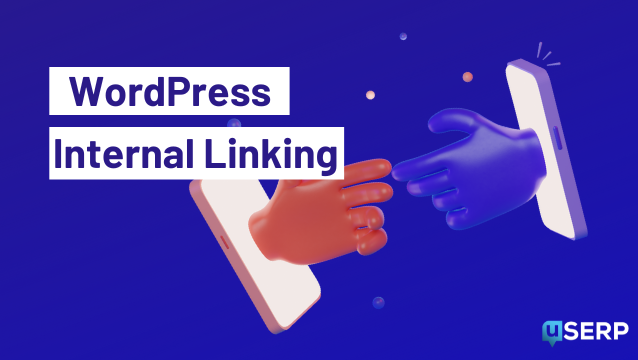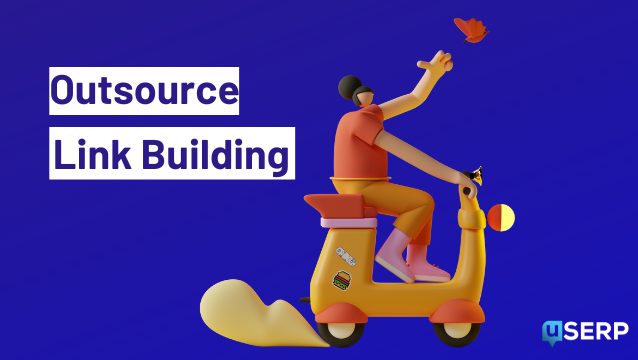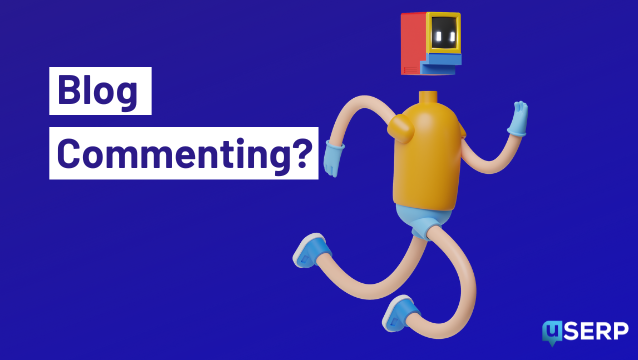Building an effective brand is essential to the success of marketing campaigns and driving conversions to your business. As Amazon founder Jeff Bezos says, “Your brand is what other people say about you when you are not in the room.”
A brand is made up of a logo, design, image, messaging, and concepts that identify a business, product, or service. Logos, slogans, designs, etc., are elements and marketing tools that help an organization build a brand.
Building a brand is essential because the brand gives the business its identity. With your users’ help, a brand built correctly can give your business a voice. Your voice is something that customers connect with and encourages them to engage with your business.
This article will cover the brand-building process and how listening to your users can help create a great brand.
What is brand building?
Building a brand that users love doesn’t have to be complicated. However, you need to know the process and best practices to do it successfully.
Brand building is creating design elements, strategies, and awareness, and promoting the products and services of your business through marketing campaigns. Brand-building techniques bring customers closer to the company and communicate value to the customer that they can see, feel, and experience.
Marketers have the difficult task of creating brand elements, constructing the brand, and promoting the business. Additionally, they need to take every step to transform a business into a brand to gain leads and conversions.
They work with designers, engineers, content managers, and social media teams, seeking business advice along the way. The business will have a good foundation if they effectively collaborate, follow best practices, and implement sound business advice to build and promote the brand.
Source: Canva.com
There are three primary foundations that create an effective brand. These include Brand strategy, Brand identity, and Brand marketing. Success branding will likely decrease if one or more of these foundations is underdeveloped.
Making a game plan that combines brand identity and marketing is the key to turning your idea or concept into a brand. Combining these elements may create a distinctive brand that endures throughout time.
How to build a brand, not a business
Establishing a brand for your company is different from starting a business, even if it’s something as simple as a Boba shop. Your brand is your identity, and the industry is just what you sell or provide to users. Without a business, there’s no brand, and without a brand, you won’t have a successful business.
Logos, messaging, websites, and other marketing materials are all elements that create a brand. Therefore, they must be consistent and work together to create more than just a business. To build a strong relationship with your customers, it’s also essential to create an emotional connection with your brand. One way to do this is by humanizing your business and showcasing your brand’s story and values. Including corporate headshots of your team members in your marketing materials can further contribute to this humanized approach, making your brand more relatable and authentic. While this may have been challenging in the past, connecting with your audience is relatively simple nowadays. For example, PlayPlay‘s short-form video editing suite allows even the most tech-averse users to produce polished video clips with ease, simplifying the process of engaging your audience.
The differentiation and value that comes from your brand are what make you stand out.
Even financial websites owners are in need of an excellent brand identity with professional design to showcase their services.
Google and other search engines love businesses that make a promise to customers and deliver on it through their assets. Ideally, a brand has excellent customer service automation, high-quality products or services, effective websites and messaging, and creates a great user experience.
There are a few fundamental steps to building a brand that works. It starts with the basics and should follow the user through their journey.
Establish the basics
Source: Canva.com
Many of us have heard confident business owners claim that their concept was so great that they needed to “switch on the marketing.” According to them, if they market the product or service, they’ll see sales, conversions, traffic, and overall success.
However, there has never been a business that can “switch on the marketing.” There’s extensive research, planning, and execution that must go into branding and marketing to succeed.
Whether you are a large, medium, or start-up business doesn’t matter. Brand building and growth start with the basics. The first step is to create the elements that will lead your marketing efforts, including logos, messaging, landing pages, and other designs.
As previously stated, your brand is the emotional bond you and your company have with your audience. Therefore, it’s your responsibility to influence how they connect. You achieve this through creating an identity for the business, communicating with the target user, and listening to them. Then, use the insights you gather to create marketing materials, offerings, and business elements that meet user expectations.
As a marketer, you should answer some questions to understand if you are on the right track when building your brand.
What are the brand message, promise, and value proposition?
A brand’s overall message and value proposition will guide your strategies. The value proposition or brand promise will tell the target user what they can expect when they use your products or become a customer. Additionally, it needs to communicate how you can help solve their issues or make their lives easier.
The customer needs to understand what you can do for them and why they should be interested in your offer.
The best way to create this is to consider why you started the business, what issues your product or service addresses, and the people you want to target. Once you understand user pain points and how to fix them, you can communicate this in a simple, descriptive, and compelling value proposition.
Do you have an effective brand name?
Source: Pollthepeople.app
While a brand name might seem like a simple part of the business, the name you choose significantly impacts the target user. Does the name fit your industry? Using a business name generator can help you brainstorm potential names that fit these criteria.
A brand name serves as the first impression for the target audience, and it is the brand’s foundation of the brand. The brand name can differentiate your company from the competition. If you have a unique or powerful name, it can make your brand more memorable.
Holger Sindbaek, the owner of a gaming platform, World of Card Games, says, “When I took the helm at World of Card Games, I realized the name wasn’t just a title—it was a promise. Every time players logged in, they entered a universe dedicated to card games. The brand name was our silent pledge to deliver unparalleled experiences. In our journey, we learned that a brand name isn’t just about identity; it’s about setting expectations. If your brand name sets the right tone, it becomes a beacon, drawing in those who resonate with its message. So, always ensure your brand name isn’t just catchy, but also a true reflection of the value you bring.”
There are a few things to consider when choosing a brand name. First, make sure your name is memorable, unique, relevant to the industry, and easy to pronounce. The best way to ensure your name resonates with the audience is to test it and listen to your target audience.
Is your logo unique and memorable?
Source: Pollthepeople.app
A logo is a vital part of your brand, and in today’s digital age, creating one has become easier than ever with the help of logo maker tools available online. Think about some of the biggest brands like Apple, McDonald’s, and Tesla. They all have clear and memorable logos that cannot be mistaken for other brands. While creating this kind of recognition takes time, starting with a great logo can help your branding efforts.
Logos can be the most important identifier for your business. According to a study, 75% of users recognize a brand by its logo (Renderforest branding survey, 2022).
An effective logo is unique, distinctive, and represents the business. You want the target audience to distinguish your business through the logo alone. Research, brainstorming, and ultimately asking your users if your logo design accurately represents your business, is the best way to identify a logo.
Logo testing is a quick and easy way to get feedback from your users and give them a visual representation of your brand that they love. When you listen to the target audience and incorporate their feedback, your logo is more likely to resonate.
Is the website designed for users, and does it create a good user experience?
A well-designed website will convey reliability, professionalism, and integrity, encouraging visitors to believe in your company’s reputation. A well-designed website will capture users’ interest and explain the benefits, use cases, and value you give users. It’ll help establish long-lasting relationships with them.
Do you understand your target audience and address their needs?
You can only establish a business that goes beyond selling goods or services. Stay aware of your audience’s background, desires, requirements, difficulties, and objectives. Knowing your audience will help identify unmet demands. This way, you can understand what turns a visitor or potential user into a customer. Knowing your audience allows a company to tailor its offerings and marketing approach effectively to the target audience.
Build trust
Source: Semrush
If you reflect on a long-term relationship you’ve had, whether it be personal, social, or corporate, one of its underlying characteristics is trust. Gaining the trust of your target market is essential for encouraging potential customers. They’ll interact with your company and help develop brand loyalty. Without trust, a business won’t convert users, create long-lasting customers, or grow. When building a brand, you must be genuine and explain clearly why your audience can trust it to help them achieve their goals.
According to a survey, 46% of consumers are likely to spend more with a brand they trust (Salsify Brand Survey, 2022).
It takes time to build trust. It’s not always easy and requires work. However, when a brand effectively communicates with users, is honest about what they do and offer, and connects with the audience like they are talking to a friend, it builds trust.
You must make the client feel comfortable with the brand. Remember, the customer is an essential part of your business. Promise, competency, and integrity are the three components of consumer trust – you need all three to build a successful brand.
Long-term business success is a result of relationships built on trust and promises. It raises the likelihood that this client will suggest your services to other potential customers. A great brand should treat every customer as a partner and go above and beyond to ensure they feel that way.
Create a brand voice
Source: Tritter.com
Your brand’s personality, or voice, is how you stand out from the competition. Regardless of which departments are in charge of which channels, it must remain constant throughout your interactions (social networks, websites, blogs, newsletters, and ads).
Developing a consistent brand image will guide your marketing activities. Your brand image will also help you establish your brand identity and communicate with your target market. Users are aware of a company’s tone. Therefore, developing a strong brand voice is essential to establish your company as a market leader.
A strong brand voice helps customers recognize and connect to your brand. It also helps differentiate your brand from the competition. It increases brand loyalty and draws in new potential customers.
You use your brand voice to generate content for your business or brand. Some of the key factors you must keep in mind are :
- Define the brand’s personality.
- Examine the voice of rivals to determine what distinguishes them from one another.
- Pay attention to your client’s tone and reflect it in your brand.
- Use your voice to move users to action.
- Over time, adapt the brand voice to grow with the organization.
Users hear your brand voice in everything your company presents. So keep it consistent through the website, ads, blogs, and everything else you publish. Even if you decide to make an app, make sure the content in the application properly communicates your brand voice and personality.
Building a brand by listening to users
Source: Pollthepeople.app
The effectiveness of a brand launch, as well as rebranding, is assessed by brand testing. This assessment enables businesses to test various brand elements and collect feedback. It also helps to figure out how customers perceive the company and their expectations. Therefore, incorporating a brand testing process will help you meet user expectations and needs.
The components you use to communicate with your audience, such as your name, logo, and messaging, compose your brand. Testing and listening to your users can improve all of these elements.
Real users are shown different iterations of a logo, site, message, etc., during brand testing to gather input and optimize. Using this technique, you can create the ideal brand for your customers.
The process makes it easier to communicate with users and understand how they view the company and how they feel about it. Optimizing every aspect of the brand before it can affect your business promotes brand growth. Additionally, understanding consumer preferences will help you better align your brand with its needs.
Final thoughts
A brand’s launch is often unsuccessful because it doesn’t meet needs and expectations or communicate value to the target audience.
To maximize the effectiveness of your brand design, you need to spend time building a brand that users love. This task becomes simpler when you listen to them and make changes that incorporate their feedback. The goal should be to reach the right users and build relationships with them to grow the business.
Building a great brand that attracts the right users takes time and effort. But success awaits if you listen to users and build a brand that meets their needs and expectations.
- Brand Building: How To Build A Brand By Listening To Users 2023 - February 1, 2023








